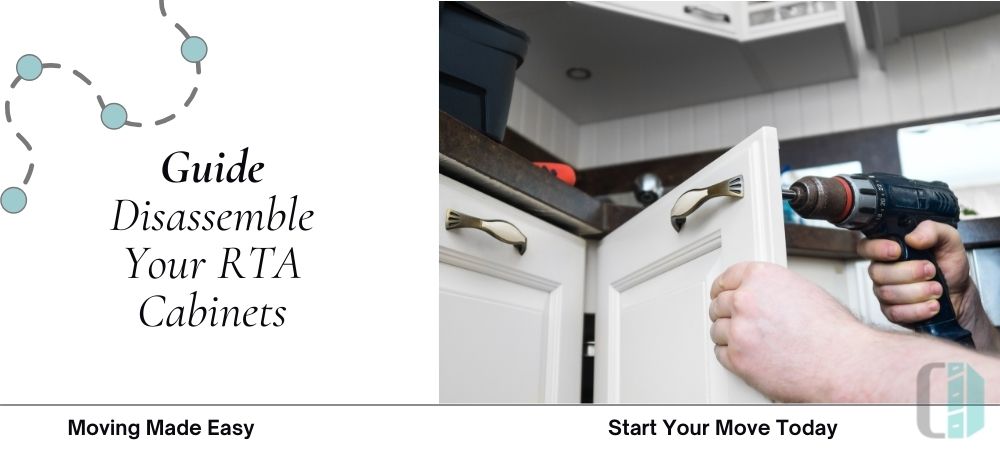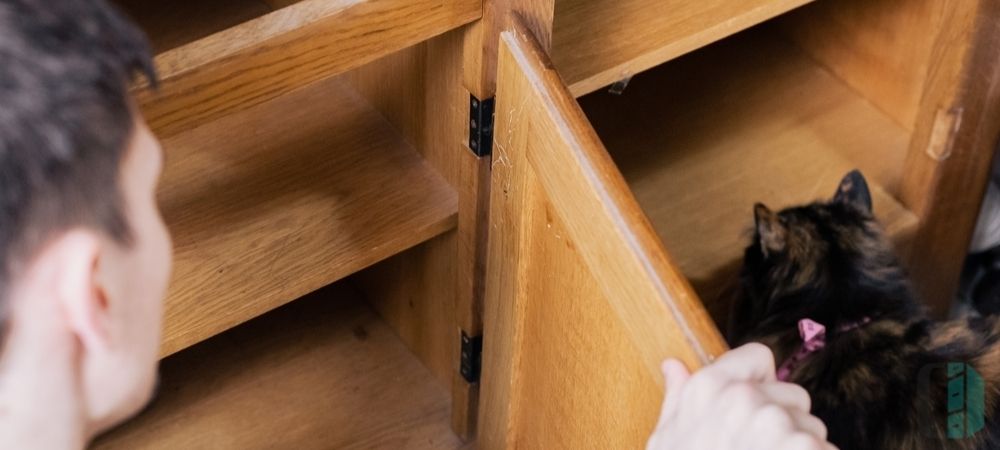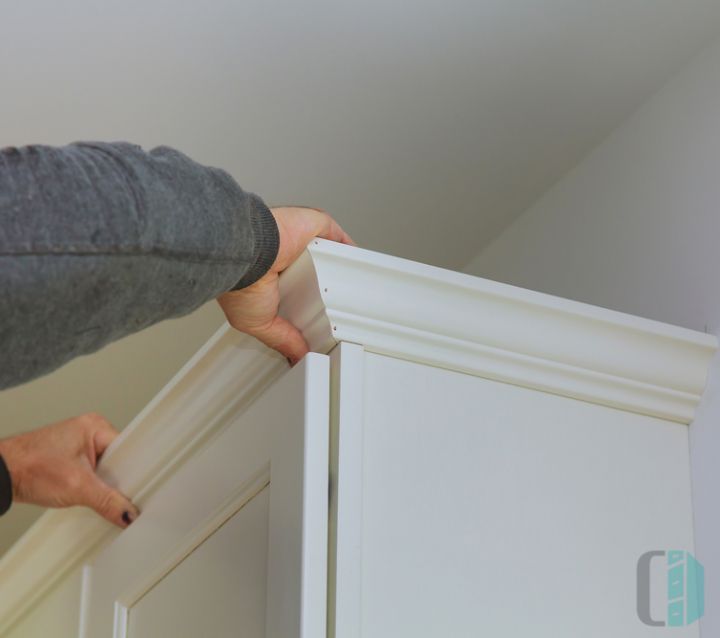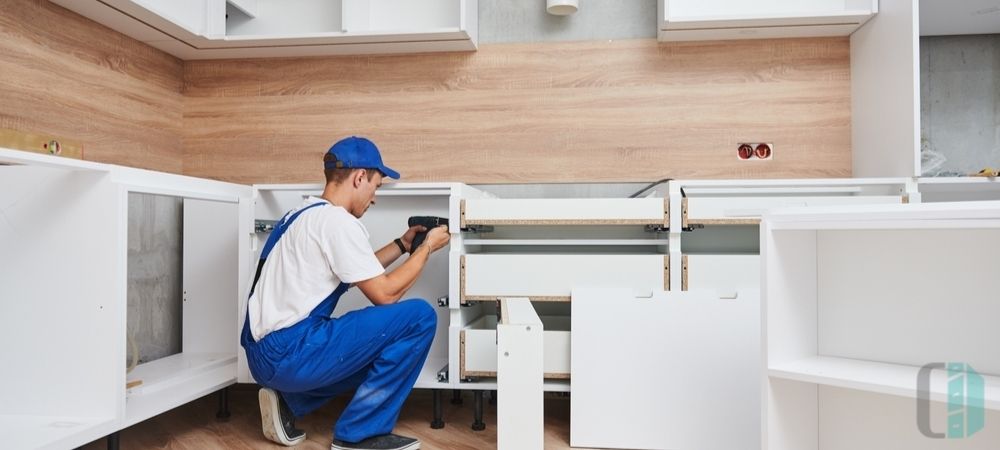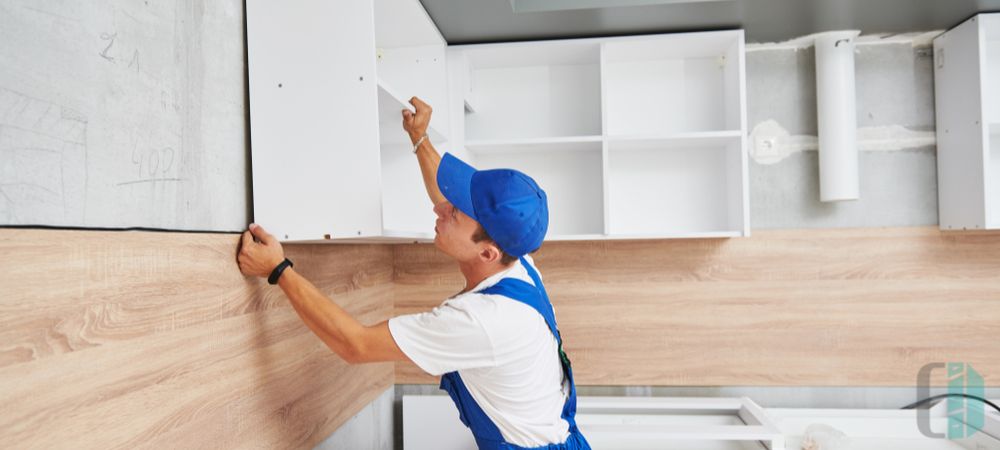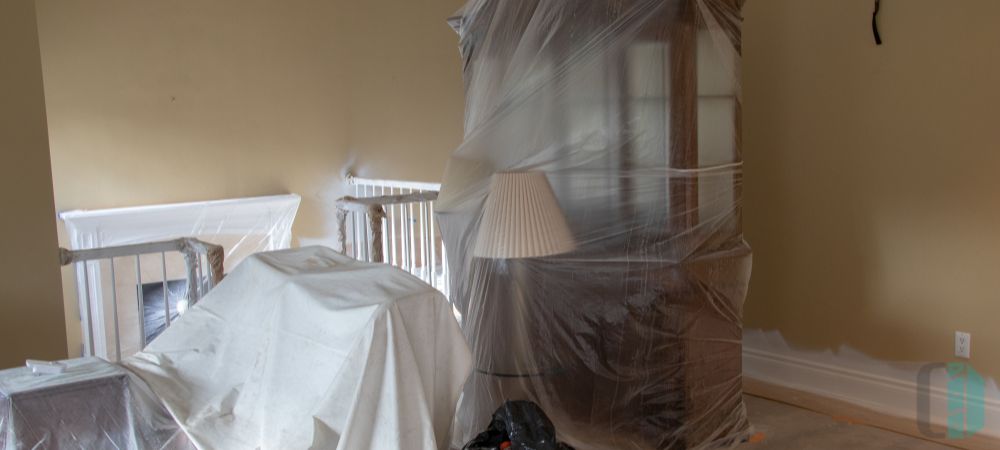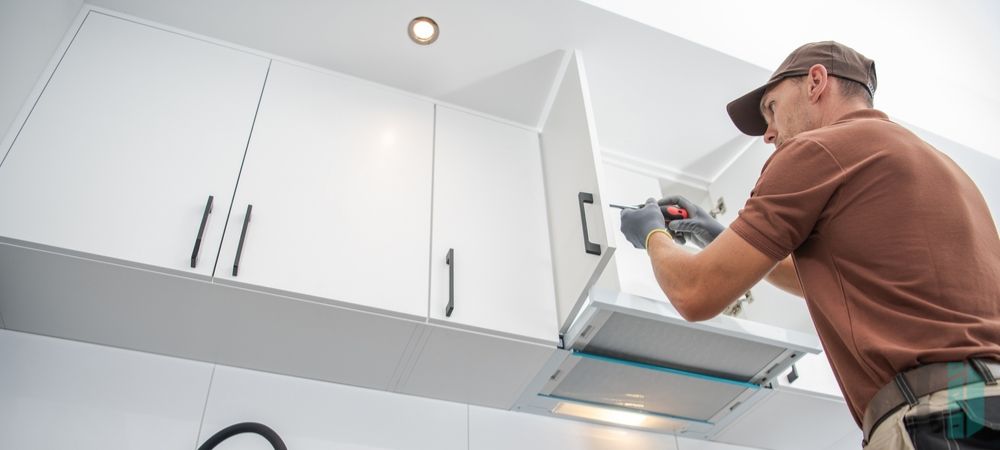Moving Soon? A Step-by-Step Guide to Disassembling Your RTA Cabinets
Relocating can be stressful, especially when moving your kitchen or bathroom cabinets. If you have ready-to-assemble (RTA) cabinets, proper disassembly is crucial to ensure they remain in good condition for reinstallation. Unlike traditional cabinetry, RTA kitchen cabinets are designed for easy assembly. However, taking them apart requires careful planning, the right tools, and a methodical approach to prevent damage. In this guide, we’ll walk you through the essential steps to safely disassemble and easily transport your RTA cabinets.
- Gather The Necessary Tools
- Screwdriver
- Ziplock Bags
- Permanent Marker
- Prybar
- Hammer
- Gloves
Labeling can save time and prevent confusion during reassembly. Here are some tips for labeling parts effectively:
- Mark each cabinet part with a permanent marker or adhesive label.
- Number or letter each piece (e.g., "Side 1", "Top 2", "Door A") to ensure easy identification.
- Using different colors for different cabinet sections helps quickly group parts.
- Use zip-lock bags or small containers to store screws, hinges, and other small hardware items for each cabinet.
- Label the bags or containers with the corresponding cabinet section, e.g., "Hinges for Cabinet 1".
- Develop a simple parts list to outline each cabinet's number of pieces and parts.
- Label the outer packaging (box or carton) to match the individual pieces inside.
- Include a copy of the assembly instructions with each group of labeled parts.
Step 1: Remove Belongings from Cabinets
Be sure to remove all items from inside the cabinets. This will allow them to be transported safely to the new home. As a proactive step, wipe out the insides and cabinet doors before disassembly. This will ensure a clean start in your new home and protect your cabinets during the move.
Step 2: Detach Cabinet Doors and Remove Shelves
Once the cabinets are cleared and cleaned, it is time to remove the interior shelves and detach the cabinet doors. Use a screwdriver to unscrew the hinges that attach the door to the cabinet.
Once all screws are loose, slowly remove the cabinet door from the frame. Exercise firm control of the door while loosening all screws. Check for shelf supports, remove brackets, and lift the shelf up and out of the cabinet. Consolidate all screws and deposit them into a labeled, resealable plastic bag.
Step 3: Remove Trim or Molding
Insert a flat pry bar or a putty knife between the molding or trim and the cabinet to gently loosen it. Tap the pry bar gently with a hammer to loosen the molding without damaging the wood underneath. Work in small sections so you don't cause any damage. Remove the nails or screws after loosening the molding.
Step 4: Take Apart Cabinet Boxes
Cabinets are typically assembled with screws, nails, or staples. If you assemble the box with screws, you must drill or unscrew them. Start from the back of the cabinet and work towards the front.
Use a pry bar or flathead screwdriver to carefully pry apart the joints. Removing all fasteners before separating the cabinet panels is essential. This will prevent damage and ensure a smooth disassembly process.
Step 5: Remove Cabinets from The Wall
Once the screws are removed, it's crucial to exercise caution as you gently pull the cabinet away from the wall. Use a pry bar if needed; however, be gentle. If the cabinet is large or heavy, it's advisable to have a helper assist in supporting it as you remove the screws. You can also place a sturdy object beneath the cabinet, like a box or block, to help support its weight.
Once the cabinet is detached from the wall, carefully lift it off and lower it. If the cabinet is large, tilt it slightly to maneuver it out. Thoroughly inspect the wall for any leftover screws, nails, or adhesive.
This step ensures the wall is in good condition before installing new cabinets or painting. Patch any holes or damage in the wall before proceeding.
Step 6: Pack Up and Transport Your Cabinets
Wrap each cabinet in moving blankets or padded furniture covers to protect them from scratches, dents, or nicks. Secure the blankets with packing tape or stretch wrap so they do not shift. For extra protection, especially on fragile edges or corners, wrap areas with bubble wrap before covering them with blankets. This is especially important for cabinets with glass inserts or intricate details.
For additional protection, consider using foam or cardboard corner protectors to shield sharp corners during transport. Use a dolly or furniture slider to move the cabinets to your vehicle quickly. These tools will help you lift and carry heavy cabinets without straining yourself or damaging your floors.
Secure the cabinets with tie-down straps or ropes in your vehicle to prevent them from shifting during transit. While driving, take extra care to avoid sudden stops, sharp turns, or bumpy roads, which could cause the cabinets to move or damage.
What If a Cabinet Gets Damaged?
Moving your kitchen cabinets to a new home can sometimes result in unexpected damage. The aftermath can be frustrating, whether a scratch, dent, or brokering. Cabinet Distribution is here to provide a trusted solution for high-quality, ready-to-assemble cabinets. Our extensive range of ready to assemble cabinets ensures that if you do experience any damage, replacing a cabinet is easy. With our seamless shopping experience, you can quickly find a matching style, color, and size. This makes the replacement process straightforward and stress-free.
Step 7: Reassembling Your Cabinets in Your New Home
Smooth reassembly ensures your cabinets are installed correctly and function properly in your new space. Here are a few tips to help you organize your parts for an efficient reassembly:
- Sort the Parts: Before starting, lay out all the cabinet components in a spacious area. Group similar pieces together to avoid confusion.
- Check the Hardware: Account for all screws, nails, and hinges. Organizing these in small containers will make it easier when you're ready to install.
- Label Components: Label each piece with numbers or letters corresponding to your assembly instructions. This step can save time and prevent mistakes.
Why Choose Cabinet Distribution for Your RTA Cabinets?
Get effortless cabinet solutions with Cabinet Distribution:
- Lightning-fast shopping: No long wait times! Cabinets ship in five days, preventing project delays.
- Best Priced Cabinets: Our affordable RTA kitchen cabinets offer the best value for your money without compromising on quality.
- Free Design Service: Need expert guidance for your next remodel? Our free design service can help you create the perfect space without extra costs.
Final Thoughts
By following the steps, organizing parts properly, and taking time, you can ensure a smooth transition to your new home. Damaged cabinets? We offer easy RTA cabinet replacements.
Taking proper care when moving and assembling your cabinets will help ensure they remain in excellent condition for years.



